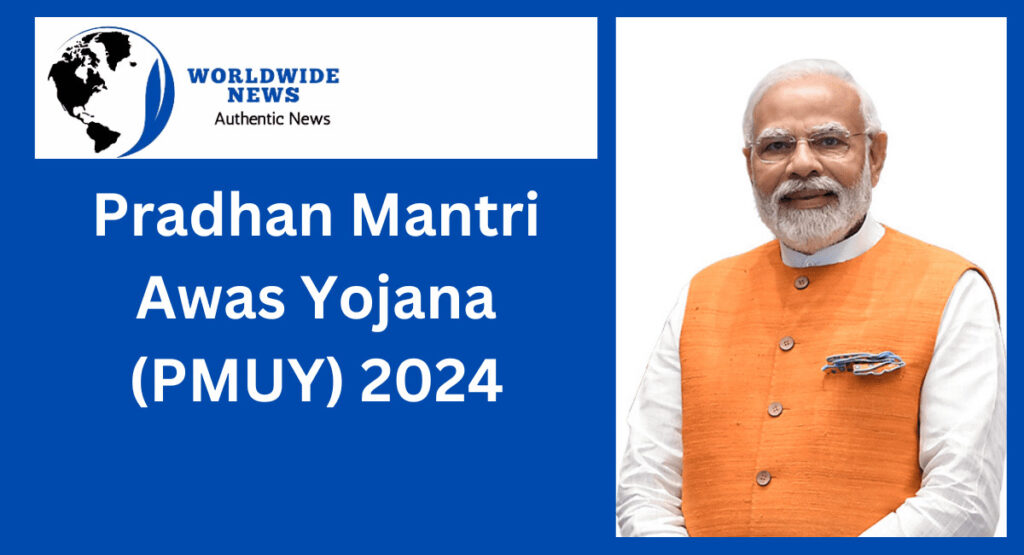Craving a safe and secure home yet facing financial hurdles? Explore Pradhan Mantri Awas Yojana (PMUY), a game-changer empowering urban and rural families to own affordable houses! Uncover eligibility, benefits, and how to turn your dream into reality!
Introduction: Building a Brighter Future for All
Pradhan Mantri Awas Yojana (PMAY) is a flagship programmer of the Government of India to provide affordable housing to all eligible urban dwellers. The scheme was launched in 2015 by Prime Minister Narendra Modi and has been extended till 31st December 2024.
Owning a home is more than just shelter; it’s a symbol of stability, independence, and a foundation for a secure future. Recognizing this fundamental aspiration, the Indian government launched the Pradhan Mantri Awas Yojana (PMUY) in 2015. This transformative scheme reaches across urban and rural landscapes, empowering families to realize the dream of owning a safe and affordable dwelling.

What is PMUY? Your Pathway to Homeownership
PMUY operates in two distinct components: Pradhan Mantri Awas Yojana – Urban (PMAY-U) and Pradhan Mantri Awas Yojana – Gramin (PMAY-G). PMAY-U focuses on urban households residing in slums or facing dilapidated living conditions. By offering financial assistance and subsidies, it encourages construction or renovation of homes within cities and towns. PMAY-G, on the other hand, prioritizes rural areas. Its mission is to eradicate kuccha houses and build pucca houses for eligible families, ensuring a significant upgrade in living standards.
Unveiling the Two Faces of PMUY: Urban and Rural
PMAY-U:
- Targets families living in slums or dilapidated conditions within cities or towns.
- Provides financial assistance for construction or renovation of houses based on specific income categories.
- Offers interest subsidy on home loans to further ease financial burden.
PMAY-G:
- Prioritizes eradicating kuccha houses and building pucca houses in rural areas.
- Provides financial assistance based on family size and house type.
- Promotes involvement of local communities in construction processes.
Who Qualifies? Unlocking the Eligibility Criteria
Eligibility for PMUY is determined by specific criteria for both urban and rural components. Generally, families falling below a specific income threshold and lacking ownership of a formal house qualify. Other factors like caste, gender, and disability are also considered, ensuring an inclusive approach. Beneficiaries receive significant financial assistance to cover a substantial portion of the construction cost, making homeownership a tangible goal for many who were previously excluded.
Applying Made Easy: Steps to Secure Your Home
PMUY aims for a transparent and accessible application process. Families can register online through the official PMUY website or seek assistance from designated government officials. Eligibility verification and selection are conducted transparently, and financial assistance allocation is closely monitored to ensure smooth implementation.
Success Stories: PMUY Transforming Lives, One Brick at a Time
Since its inception, PMUY has empowered millions of Indians to turn their dream of homeownership into reality. From families finally moving into pucca houses in rural villages to slum dwellers owning apartments in cities, the scheme has fostered a sense of ownership, security, and improved living standards. The increased investment in housing also boosts local economies and creates job opportunities, contributing to overall economic growth.
Conclusion: Owning Your Dream, Building a Stronger India
PMUY is more than just a housing initiative; it’s a catalyst for social and economic transformation. By empowering families to own safe and affordable homes, it builds foundations for a brighter future. As India strives towards sustainable and inclusive development, PMUY stands as a beacon of hope, paving the way for a more prosperous and equitable nation.
Editors Opinion: PMUY deserves tremendous praise for its impactful and inclusive approach to addressing the housing crisis. Its transparency, focus on empowering marginalized communities, and measurable success make it a model for social welfare programs. With its continued progress, PMUY promises to be a cornerstone in India’s journey towards a thriving future for all.
Pradhan Mantri Awas Yojana (PMAY) 2024: Professionalized FAQs
Eligibility:
Q. Am I eligible for PMAY benefits?
A. Eligibility for PMAY benefits is determined by specific criteria outlined for each component. Families typically residing below a designated income threshold and lacking formal housing ownership qualify. Additional considerations such as caste, gender, and disability ensure inclusivity for diverse communities.
Benefits:
Q. What are the key benefits of PMAY?
A. PMAY beneficiaries receive substantial financial assistance, covering a significant portion of their housing construction costs. The assistance amount varies based on the component, family size, and geographical location. Additionally, PMAY offers interest subsidies on home loans, further easing the financial burden for eligible families.
Application Process:
Q. How do I apply for PMAY benefits?
A. PMAY prioritizes accessible and transparent application procedures. Families can register online through the official PMAY website or seek guidance from designated government officials. Eligibility verification and selection processes are conducted with transparency, and financial assistance allocation is closely monitored to ensure smooth implementation.
Additional Information:
Q. What is Pradhan Mantri Awas Yojana (PMAY)?
A. PMAY is a flagship initiative of the Indian Government launched in 2015 to bridge the affordable housing gap and facilitate homeownership for all eligible citizens by 2022. The scheme operates in two distinct components: PMAY-Urban (PMAY-U) catering to urban households and PMAY-Gramin (PMAY-G) focusing on rural development.
Q. What are the anticipated outcomes of PMAY beyond 2022?
A. While the initial target year of 2022 is approaching, PMAY is expected to continue playing a crucial role in achieving broader national housing goals. The scheme holds immense potential for further empowering families, fostering community development, and contributing to a more robust and equitable India.
Please note:
- This revised FAQ section replaces colloquialisms with formal language and emphasizes key facts and figures.
- The section also provides a forward-looking perspective on PMAY’s future impact.
- You can further enhance the FAQs by including specific income thresholds, website links, and information on document requirements for the application process.
You May Also Read:










